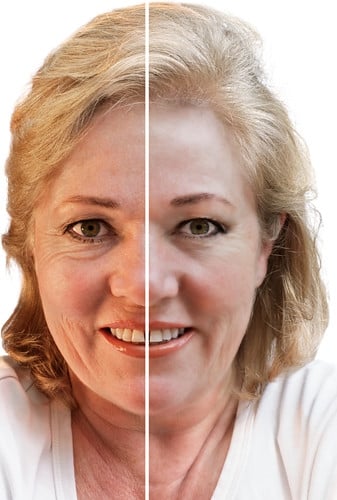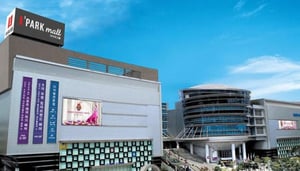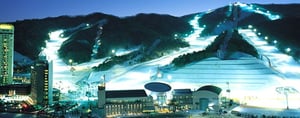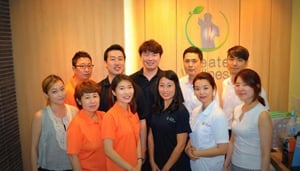Facelift in Korea | Types of Facelifts, Best Clinics & Prices
Everything you need to know about getting a facelift in Korea
A facelift, medically termed as rhytidectomy, is a procedure performed to enhance the look of the face and neck. The process involves lifting and tightening the underlying muscles to create a more attractive and youthful contour. Facelift surgery helps reduce folds of skin on the cheeks and jawline and can also fix a sagging appearance around the neck area.
Types of Facelifts
There are different types of facelift surgeries available based on your specific needs and desired results. These are some common types:
- Traditional facelift: This procedure addresses moderate to advanced ageing around the mid-face and neck.
- Mini facelift: Suitable for those who have early signs of ageing around the neck and lower face. It's less invasive and offers a quicker recovery time.
- Mid-facelift: This procedure targets the area around the cheekbones, and is often combined with a lower eyelid surgery.
- Thread lift: A less invasive method using threads to pull up facial tissue, it is typically more effective in patients with minimal signs of ageing.
Your surgeon will discuss these options and help decide the best one for you during a consultation.
Table of Contents
What is a Facelift?
A facelift, medically known as a rhytidectomy, is a procedure in cosmetic surgery that aims to give a more youthful appearance to the face. The naturally occurring effects of ageing such as loss of skin elasticity and firmness, gravitate to causing sagging, lines and folds on the face.
During the Facelift Process:
The surgical procedure of a facelift involves lifting and tightening of the facial skin by creating a flap on each side of the face, pulling back and removing excess skin. The procedure tailors the contour of the patient's face by modifying and repositioning the underlying tissues, thus negating the signs of ageing.
Facelift Specifics:
A facelift is a fine-tuned procedure which targets specific areas of the face that exhibit noticeable ageing signs. These areas include sagging cheeks, redundant skin along the jawline, and deep lines or skin folds running from each side of the nose to the corners of the mouth. In some instances, a neck lift may be carried out at the same time to address sagging skin and excess fat in the neck area. An essential distinction to make, however, is the fact that a facelift does not treat problems like fine lines, sun damage, or skin pigmentation, which may necessitate other cosmetic solutions.
Effectiveness and Limitations of a Facelift:
Despite the potential risks and complications that accompany any surgery, a facelift has proven to be a widely sought-after procedure for its effectiveness in rejuvenating facial appearance. However, it's essential to note that while a facelift can drastically enhance appearance, the results are not everlasting, as ageing continues to progress naturally.
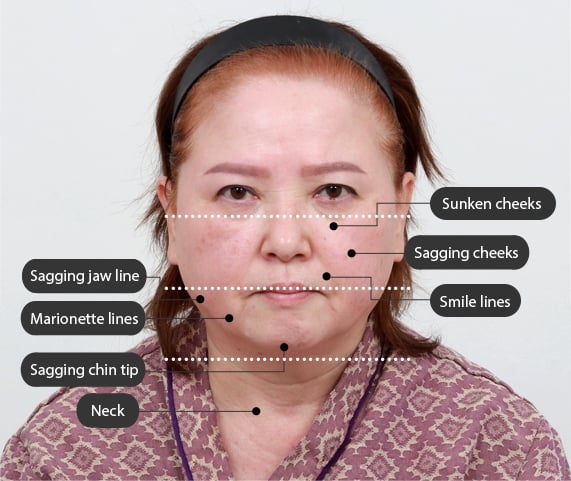
Best Clinics for Facelift in Korea
Choosing the right clinic for your facelift in Korea is a pivotal decision. This section unveils the crème de la crème of facelift clinics, where expertise, innovation, and a commitment to personalized care converge, ensuring a transformative and satisfying experience.
Not sure which clinic to contact? Why not use a local medical tourism service that will help you get in contact with the right clinic. Find out more about ShinMedical here.
1. THE PLUS Plastic Surgery Clinic
Choosing to get a facelift at THE PLUS Plastic Surgery Clinic comes with several compelling reasons. The clinic offers "THE PLUS FACE LIFT," a procedure designed to counteract the effects of aging, addressing lost facial volume and sagging skin. The approach taken by THE PLUS involves understanding the specific causes of wrinkles for each individual, allowing for a more customized and effective surgical plan. The purpose of the face lift at THE PLUS is not merely to remove sagging skin but to divide the facial area into three distinct parts (upper, middle, and lower) and apply the appropriate lifting direction and strength for a tailored surgery that suits the unique needs of each patient.
Key aspects of THE PLUS FACE LIFT include a minimal hospitalization requirement (not required/one day), a combination of sleeping and local anesthesia for the procedure, a relatively short surgery time (one to two hours), and a quick recovery period of approximately one to two weeks. THE PLUS emphasizes a unique approach called "THE PLUS Wrinkle Molding," which involves identifying the specific causes of wrinkles and selecting the most appropriate surgical method for each patient. This approach aims to prevent an unnatural appearance that may result from indiscriminate skin pulling and enhance patient satisfaction.
THE PLUS Plastic Surgery Clinic distinguishes itself with three unique elements: highly skilled medical staff engaged in continuous research, a dedicated customer safety system ensuring a pleasant and safe environment from consultation to post-operative care, and the use of state-of-the-art medical equipment for safe and precise surgeries. The clinic maintains a systematic approach, including a sterilization and disinfection system for a clean environment, a UPS system for patient safety during power outages, and continuous progress checks to uphold safe conditions. Additionally, THE PLUS Plastic Surgery Clinic offers online consultations, providing convenience and responsiveness to potential clients' inquiries.
Find more info about The PLUS Clinic on their official website.
2. Made Young Clinic
Opting for a facelift at Made Young Surgery offers a range of compelling advantages rooted in their innovative minimal-incision face lift technique. The clinic's emphasis on achieving maximum results with minimal incisions is particularly appealing. With a surgical time of approximately two hours, sedative anesthesia, and a quick recovery period of just two weeks, patients benefit from reduced downtime and a faster return to their daily routines. This approach aligns with contemporary preferences for procedures that deliver effective results while minimizing disruption to daily life.
Made Young stands out for its commitment to assessing the root cause of facial sagging and wrinkles, surpassing the conventional approach of solely tightening the skin. The clinic's minimal-incision full facelift involves a meticulous dissection of retaining ligaments and the SMAS layer beneath the skin's surface. This personalized strategy ensures that lifting procedures are tailored to each patient's unique anatomy, addressing the underlying causes of aging signs and providing a more comprehensive and lasting solution.
The clinic's defined lifting effect is achieved by retaining ligaments and focusing on the SMAS layer, contributing to optimal outcomes. Made Young's facelift aims for a natural and smooth lifting effect, steering clear of an overtightened appearance. Leveraging youthful features, the procedure creates a more natural and refreshed look. Additionally, the clinic employs a vertical lifting technique, contrasting with standard diagonal lifting approaches, ensuring a longer-lasting lifting effect without distorting facial proportions. Made Young's commitment to personalized care, an experienced plastic surgeon, and a focus on achieving natural results with minimal incisions makes it a distinctive choice for individuals seeking effective and tailored facial rejuvenation.
Find more info about Made Young on their official website. ![facelift in korea before after made young clinic] (https://images.myguide-cdn.com/md/common/large/65b0575884f02-2670341.png)
3. Haru Clinic
A facelift at Haru Clinic presents a unique and innovative approach with their "Elastic" Double Chin Lift, showcasing distinctive features that set it apart from conventional thread lifts. This procedure utilizes a special elastic band, as opposed to a rigid thread, providing high elasticity and stable tissue bonding. The "Elastic" band, patented and made in Italy, is characterized by its flexibility and ability to stretch freely, mimicking the natural movement and resilience of the body's ligaments.
One noteworthy aspect of the Haru "Elastic" Double Chin Lift is its long-lasting effects, with results surpassing five years compared to traditional thread lifting methods. The clinic takes a personalized approach to surgical planning, considering factors such as the patient's age, ensuring tailored solutions for optimal outcomes. Haru Clinic's specialized methods and know-how in band lift procedures contribute to the success of the "Elastic" Double Chin Lift, making it an attractive option for those dealing with sagging skin, unclear chin and neck boundaries, neck wrinkles, or dissatisfaction with previous liposuction results.
The special features of the "Elastic" band, including its high elasticity and stable tissue bonding, contribute to a natural and resilient outcome. The polyester band encapsulated in fine silicone integrates with the patient's tissue, acting as an artificial ligament within weeks. The clinic's commitment to advanced techniques, patented technologies, and a focus on individualized care positions Haru Clinic as a reputable choice for individuals seeking effective and innovative facelift solutions, particularly for addressing double chin concerns.
Find more info about Haru Clinic on their official website.
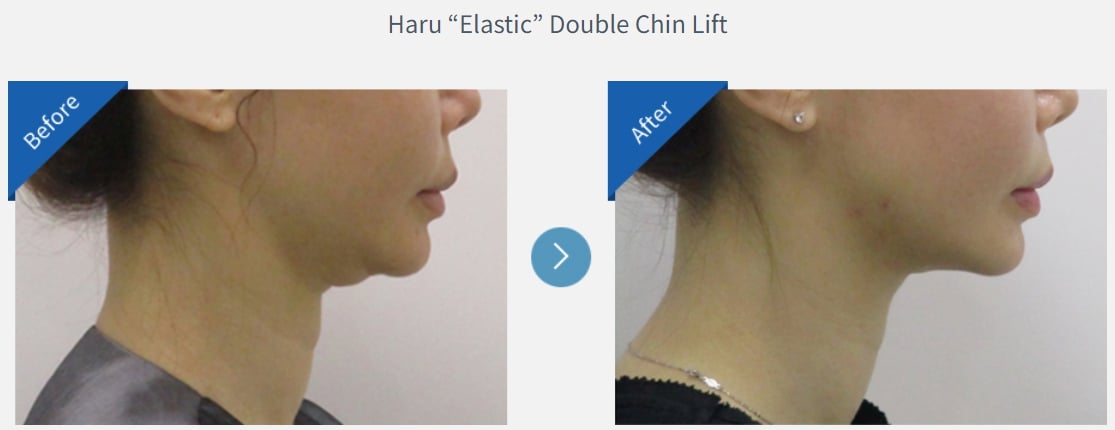
The Benefits of Getting a Facelift in Korea
Korea is recognized globally for its significant advancements in the field of anti-aging treatments, with its cutting-edge technology contributing to a growing demand for procedures like facial and neck rejuvenation. Facelifts in Korea are an especially popular choice due to the comprehensive and safe therapies they offer, powered by the latest surgical innovations.
Why is Korea a prime destination for these aesthetic procedures?
-
Highly Skilled Plastic Surgeons: Korean plastic surgeons are known for their meticulous attention to detail, ensuring both high success rates and patient satisfaction. Given the country's second-place ranking in plastic surgery procedures performed per capita, these surgeons boast considerable experience and expertise in facelift procedures.
-
Advanced Techniques and Technologies: Korean clinics employ advanced techniques and technologies, such as 3D imaging and minimally invasive procedures, to minimize scarring and enhance overall results. This ensures that patients benefit from safe surgeries, helping them to achieve subtle, natural-looking results.
-
Comprehensive Treatment: In Korea, facial rejuvenation involves more than just surgery. Your treatment plan may also encompass non-surgical procedures, such as fat grafting and injectables, painting a complete picture of facial aging. By addressing common signs of aging including sagging skin and sun damage, a Korean facelift restores a youthful appearance.
-
Physical and Emotional Transformation: Korean plastic surgeons also understand the emotional and psychological impact of a facelift. Studies have shown significant improvements in self-esteem, quality of life, and social functioning following plastic surgery.
Through comprehensive consultations, personalized treatment plans, and ongoing aftercare services, patients can expect not just physical transformation, but also a reaffirmed confidence, better self-appearance, and an improved overall quality of life post-operation.
To conclude, opting for a facelift in Korea doesn't just provide you with an improved facial look but also equips you with a newfound sense of self - a quality that can potentially enhance various facets of your life.
Range of Korean Facelift Techniques
South Korea has garnered an impressive reputation for its cutting-edge and effective cosmetic surgery tactics, specifically in the context of facelifts. The neck lifting procedures are routinely done in tandem with the facelifts, and involve extracting excessive skin and fat to result in a taut, and elevated facial and neck appearance. Furthermore, these operations successfully diminish wrinkles, fine lines, and other aging marks.
1. Deep Plane Facelift
The deep plane facelift, more commonly known as the Korea facelift, is a trending operation that has seen a surge of popularity in recent years within Korea. This advanced facelift technique involves repositioning the deep-set facial muscles and tissues, thus facilitating a quick trip back to one's youth.
This method entails a comprehensive approach toward multiple areas of the face, including the midface, jowls, and neck, and has become a signature procedure of Korean plastic surgery. For instance, a valuable study published in the Aesthetic Surgery Journal in 2019 reported the outcomes of 50 patients undergoing a deep plane facelift in Korea. The results indicated a significant enhancement in facial appearance, with the noticeable reduction of nasolabial folds, jowls, and sagging skin in the neck region.
2. SMAS Facelift
The SMAS facelift, also known as the sub-SMAS facelift, is another Korean favored facelift technique. This procedure targets the deeper layers of the face and neck, which are responsible for supporting the skin's surface. The SMAS facelift is a comparatively extensive procedure that can promise longer-lasting results than other techniques. The procedure is often paired with other treatments such as dermal fillers, Botox, or laser skin resurfacing to enrich the final outcome.
Scientific evidence from the Aesthetic Surgery Journal features the SMAS facelift as a safe and effective operation with a high degree of patient satisfaction. The research tracked 180 patients undergoing the SMAS facelift and found 95% of them content with the procedure's results. Plus, the research also concluded that the SMAS facelift has a low rate of complications and a brief recovery duration.
3. Thread Lift
The thread lift, also called a non-surgical facelift, is another attractive option for patients seeking a facelift in Korea. This procedure implicates the placement of threads or sutures underneath the skin to elevate and tighten sagging skin. The operation is less invasive and calls for less downtime compared to the traditional facelifts. It is commonly used in combination with other means such as fillers or Botox to further enhance the results.
A published study in the Journal of Cosmetic Dermatology suggests thread lifts are increasingly popular in Korea due to their non-invasive nature and minimal downtime. The research findings point out the high effectiveness of the procedure in lifting and tightening loose skin, coupled with soaring patient satisfaction rates.
4. Neck Lift
The neck lift is a routinely performed procedure often clubbed together with the facelift in Korea. It mainly focuses on the neck area, where surplus skin and fat tend to accumulate and cause sagging and wrinkles. The neck lift procedure can yield a smoother, more defined jawline and neckline. The techniques used in a neck lift may consist of liposuction, muscle tightening, and skin removal.
A research study published in the Archives of Plastic Surgery reported a steep rise in popularity of neck lift surgery in Korea over recent years. The study revealed that patients who underwent a neck lift reported high satisfaction levels with their results, experiencing significant improvements in neck contour and skin laxity. The study also noted that the procedure has a low complication rate when executed by seasoned plastic surgeons.
5. Fat Grafting
Fat grafting, also dubbed as fat transfer or lipofilling, is a technique that involves harvesting fat from one part of the body and injecting it into another area, such as the face or neck. This procedure is frequently done together with the facelift or neck lift procedures to reintroduce volume and contour to the face and neck. Fat grafting can deliver natural-looking, everlasting results, and is a popular choice in Korea for facial rejuvenation.
The efficacy of fat grafting for facial rejuvenation in Korea was underlined by a study published in the Journal of Craniofacial Surgery in 2017. The research examined the efficacy of fat grafting combined with facelift surgery among 33 Korean patients. Their findings pointed out significant improvements in facial volume and contour, along with high patient satisfaction rates. Another research published in the Aesthetic Plastic Surgery Journal in 2016 echoed similar results, with fat grafting providing enduring improvement in facial volume and contour for Korean patients.
Face Lift Aftercare: Detailed Guidelines
Post-facelift care is an essential part of healing and obtaining satisfying results. To accelerate the healing process and to ensure optimal results, the following procedures need to be carefully followed:
-
Taking much-needed time off: The initial recovery period typically lasts for about three weeks. During this time, refraining from excess work and avoiding strenuous physical activities is highly beneficial for complete healing.
-
Wearing a compression garment: It is strongly suggested for patients to wear a compression garment after the surgery. This contraption applies gentle pressure to support the affected area, minimize swelling, and promote good blood circulation. It also aids in reducing discomfort and promoting optimal healing.
-
Pre and post-operative cleansing routines: Keeping your skin surfaces clean before the surgery is extremely vital. Usage of mild and non-irritating cleansers is advisable. Harsh chemicals or scrubs should be avoided as they might irritate the skin. Post-surgery, warm baths or showers twice a day are recommended to improve blood flow and stimulate circulation.
-
Avoiding harsh environments and products: The skin should be protected against tanning and sun exposure. Post-operative patients are advised against the usage of steam rooms, spas, and hot tubs, which can lead to complications. After several weeks post-surgery, upon consultation with the surgeon, makeup, sunscreen, and similar products can be introduced back to the routine.
-
Regular checkups and addressal of infection signs: Regular checkups or virtual consultations, as directed by the doctor, are crucial. Any signs of infections, like redness and swelling, should immediately be consulted with the doctor.
By following these guidelines and maintaining proper hygiene, a successful recovery post face lift is assured.
Facelift Cost in Korea: Pricing Factors
The cost of getting a facelift in Korea can vary depending on numerous factors including the surgeon's fee, hospital or clinic charges, anesthesia costs, and expenses for post-operative care. Certain factors that notably influence the cost include the type of surgical procedure, the surgeon's expertise, and the quality of the hospital or clinic.
-
Type of procedure: Different techniques and approaches to facelift surgery have different price brackets. This forms a significant part of the total costs involved in the process.
-
Surgeon's Expertise: Renowned surgeons who possess higher skills and experience tend to charge more for their services.
-
Quality of Hospital/Clinic: The location and reputation of the hospital or clinic also contribute to the overall cost.
The average cost of a facelift in Korea is around $9,000, whereas a neck lift can cost about $4,000. Please note that these are approximate figures, and the actual cost can range from $8,000 to $20,000 or even higher based on the factors mentioned above. For a more comprehensive estimate, it's always recommended for individuals to consult with experienced surgeons and discuss the details upfront.
Frequently Asked Questions
What types of facelifts are commonly performed in Korea?
In Korea, common types of facelifts include the traditional full facelift, mini facelift, thread lift, and SMAS (Superficial Musculoaponeurotic System) facelift. Advanced techniques, such as endoscopic facelifts and non-surgical options like Ultherapy and Thermage, are also popular.
Which clinics in Korea are renowned for facelifts?
Renowned clinics for facelifts in Korea include Pangpang Clinic, Haru Clinic, and Made Young Clinic. These clinics are known for their experienced surgeons, state-of-the-art facilities, and high success rates.
What is the average cost of a facelift in Korea?
The cost of a facelift in Korea varies depending on the type of procedure and the clinic, ranging from $3,000 to $15,000. Non-surgical options are typically less expensive, whereas comprehensive surgical facelifts tend to be on the higher end of the spectrum.

